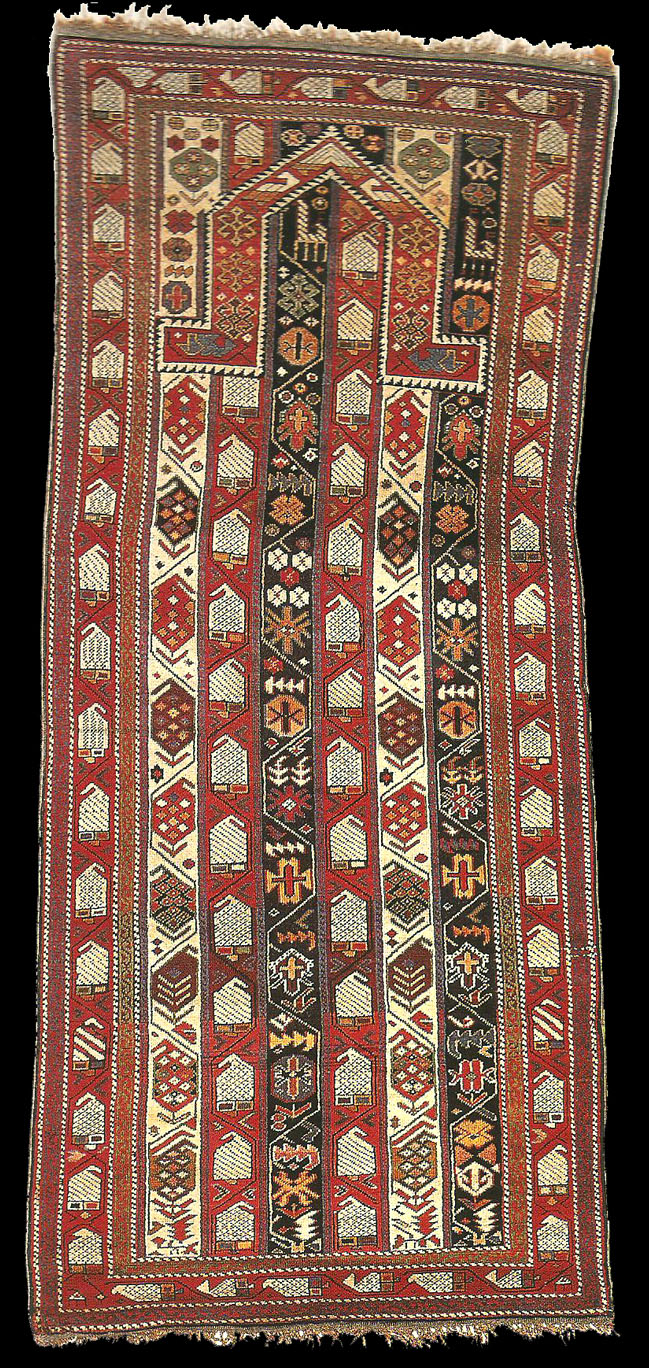|

|
Antique Derbend
prayer rug with the vertical bands, 19th century
Vertical bands are uncommon on prayer rugs from northeast Caucasia, although
they do appear with some frequency on rugs from the south, particularly
Karabagh (see plate 27). The weaver's economical use of colour does not
lessen this rug's considerable appeal. The red vertical panels match the
main border and contain bird-like, diagonally striped Marasali boteh; the
ivory panels contain larger polychrome boteh of a different type in a
variety of designs, while the two black panels feature a meandering vine
with floral motifs and serrated leaf forms.
The rug has much in common with the wonderful, full-pile example published
by Eberhart Herrmann in Von Uschak bis Yarkand (plate 44). Both share the
design of vertical panels with ascending vines, boteh. blossoms and
horizontal leaf forms, framed by a Marasali-type boteh border. While
Herrmann's rug has a somewhat greater range of colour, the similarities are
nonetheless compelling. This carpet was one of 16 pieces from die collection
of Harold Zulalian, Sr, which were disposed at Sotheby's, New York, on 3
December 1988 (along with 11 pieces from the collection of Dr and Mrs. Hans
Zimmer).
published Ralph Kaffel's Caucasian Prayer Rugs, plate 58
lit: published Ralph Kaffel's Caucasian Prayer Rugs, plate 58 |

